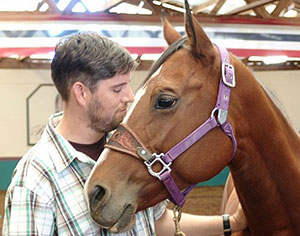BIRD Temperatures
 Get More Pet Tips
Get More Pet Tips
Content provided Pet Talk with Dr. B is meant for educational purposes on health care and medical issues that may affect pets and should never be used to replace professional veterinary care from a licensed veterinarian. This site and its services do not constitute the practice of any veterinary medical health care advice, diagnosis or treatment.
BIRD TEMPERATURES
GETTING THROUGH THE EXTREMES
By David Hannon, DVM, Dipl. ABVP-Avian
Due to the recent ice storm and power loss throughout Shelby County and the surrounding areas, I have been asked to write about how aviculturists can help their birds handle temperature extremes.
A bird that is normally kept in an outdoor aviary year round is going to be better able to handle temperature extremes, just because it is used to them. It also occurred to me that birds from more temperate climates are going to be more tolerant of cold extremes than birds from tropical climates, and vice versa for hot extremes. Typically, however, the average pet or breeder bird lives in a temperature-controlled environment and will not handle extreme temperature changes well.
Eggs and neonates are obviously going to be the most susceptible to temperature extremes just because they lack the ability to thermoregulate. A generator is almost essential to keep the incubators and nursery heaters going. If they are being parent-raised, then an external heat source is also a must, because the parents probably won't have enough body heat to keep themselves and their offspring warm.
In order to keep adult birds warm, they should be moved to smaller cages in a draft-free area. Cover the cage except for the side facing the heat source (if you have one) so that it traps heat. Make sure that the birds are not so close to the heat source that they get overheated. Birds that can't be moved to smaller, warmer cages should have a nest box or some other shelter with bedding in it inside their cage.
Suitable non-electric heat sources include natural gas heaters and fire places with good ventilation. Any open flame can obviously cause problems if the bird is allowed to near it, and combustion will produce carbon monoxide, which can be toxic in high enough levels. Natural gas burns clean and should not cause this problem. Kerosene has been shown to release fumes toxic to birds when burned in heaters, and thus should be avoided. If kerosene is the only available heat source, then it should be used in an area with high ceilings or good ventilation. Steam also provides a safe heat, but it can scald the birds if they get to near it, and the resulting condensation can lead to problems. Make sure that whatever heat source you choose contains no teflon. When teflon reaches temperatures greater than 500o F, it releases fumes that are undetectable by humans, but deadly to birds.
Birds exposed to cold temperatures need a high-energy diet to help their bodies produce heat. Foods rich in fat, such as seeds and nuts, are best suited for this. They also need plenty of fresh water, which should be warmed if possible. Make sure that their water does not freeze.
Birds that become hypothermic will be fluffed and lethargic, and will become slow or non-responsive. If this occurs, the bird needs to be gradually warmed up using body heat, warmed towels, or warm water. Try to avoid rapid warming and burns. When the bird becomes more coherent and is moving on its own, offer it a warm meal. Remember that a bird's feet and toes lack insulation and are predisposed to frostbite in extremely cold weather. Leg bands can chill rapidly and cause frostbite as well. Also remember that birds that are missing feathers for any reason, i.e. feather plucking, molt, fledging, etc., will have difficulty thermoregulating, because the feathers provide about 90% of a bird's insulation. If a bird gets wet, it can also compromise the degree of insulation that feathers provide.
Moving on to the other extreme, hyperthermia can occur in the summer or any time a bird is exposed to elevated temperature extremes. Most psittacines evolved in tropical or semi-tropical regions, and should therefore be able to handle higher temperature extremes easier than lower ones.
The main rule of thumb for keeping a bird cool is to provide good ventilation. Shade is also imperative if the bird is in the hot sun. Misting birds, either manually or with automatic misters, will also help keep them cool. Make sure that they always have plenty of fresh water, and feed lots of high-moisture foods, such as fruits and vegetables, but remember that these food items won't last long in the heat.
Normal body temperature for a bird is 107o to 112o F, so it takes quite a bit to overheat them, but it does happen. It can occur if the bird is left somewhere with poor ventilation, especially if the greenhouse effect occurs, such as might happen in a closed-up metal shed or automobile. Remember that metal nest boxes trap much more heat than wooden ones. Stress can lead to hyperthermia as well.
A bird that is slightly hyperthermic will pant and hold its wings away from its body. At this stage they will usually be fine if they are misted with water and/or moved to a cooler area. If gone unchecked, the condition can progress to ataxia (the bird becomes wobbly), seizures, or even a coma. If this occurs, the bird needs to be cooled, but not too quickly. Place the legs and feet in cool (not cold) water and wet down the feathers with cool water or alcohol. If the bird is cooled too rapidly, hypothermia can occur. The bird should be taken to the vet immediately for drugs and fluid therapy. Any time hyperthermia progresses to this stage, the heat damage can be irreversible, and the prognosis is always guarded.
So just remember that next time disaster hits, be prepared, don't panic, and use a little common sense, and you and your birds should come out of it fine.



